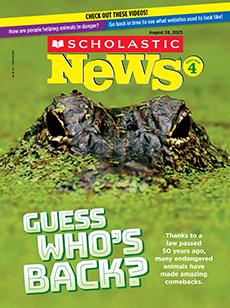It was fall of 1620. Violent waves tossed the Mayflower on the stormy North Atlantic Ocean. The ship’s passengers, now known as the Pilgrims, shook with worry and fear. They were on their way from England to set up a new colony in North America. But would they make it?
“They didn’t know what they were going to encounter,” says author Nathaniel Philbrick.
It was fall of 1620. Violent waves tossed the Mayflower on the stormy North Atlantic Ocean. The ship’s passengers, now known as the Pilgrims, shook with worry and fear. They were on their way from England to set up a new colony in North America. But would they make it?
“They didn’t know what they were going to encounter,” says author Nathaniel Philbrick.

